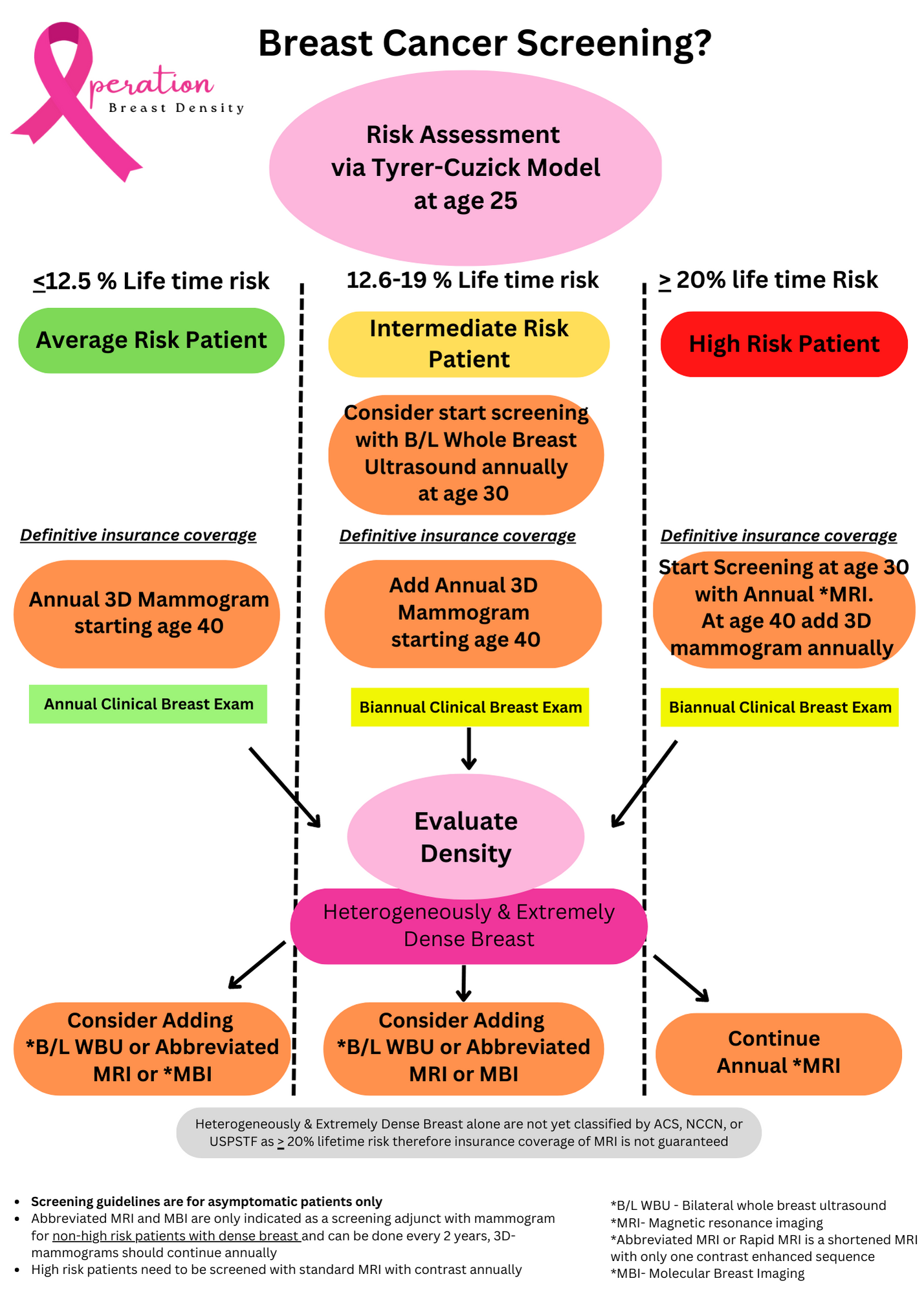
Patient Resources
“Your Health, Your Voice: Start the Conversation”
Our goal is to facilitate meaningful conversations between you and your healthcare provider. Use the resources below to learn, prepare, and be heard.
Understanding Your Breast Density
Breast density can be an important factor in understanding your overall breast health and breast cancer risk. Here's how you can have a conversation with your physician about it:
1. Begin the conversation.
Start by asking your physician to go over your mammogram report. Here's a sample question to ask:
“Hello Doctor, I would like to go over my mammogram report with you, please. Can you tell me what grade of breast density I have?”
Options you might hear are:
A. Fatty
B. Scattered
C. Heterogeneously Dense
D. Extremely Dense
The doctor may also show you an an example like the above of what the different types and levels of breast density look like. You can see that as the breast get more dense it is harder and harder to find the cancer that appears white among all the white appearing dense breast tissue.
If you have heterogeneously or extremity dense breast then mammography alone is not the most accurate screening tool for breast cancer for your. It is indicated to obtain supplemental imaging each year with a mammogram such as a breast Ultrasound or Breast MRI if you have heterogeneously or extremely dense breast. This is because a mammogram alone in these breast density levels can miss a breast cancer diagnoses up to 40-50% of the time.
Screening guidelines are NOT specific about what type of supplemental imaging is indicated therefore knowing a patients lifetime risk of breast cancer development can help determine what imaging is necessary.
2. Assess your risk.
It is recommended by the American Society of Breast Surgeons that all women know their lifetime risk of breast cancer by the age of 25.
The Tyrer-Cuzick Model will give you the most accurate calculation of your lifetime risk as it takes into account breast density and a more extensive family history unlike other risk calculation models.
“Can we go over my calculated lifetime Breast Cancer Risk score via the Tyrer-Cuzick Model?”
3. Develop a plan.
Based on your risk score and breast density, discuss the suggested screening methods and frequency with your physician.
Print out this algorithm and bring it you your physician to help guide your individualized breast cancer screening plan.
“Can we review the suggested algorithm according to this risk score and my breast density on what imaging is indicated for my breast cancer screening and how often should I be getting a physical exam?”
4. Discuss your family history.
Talk to your physician about your family history and determine if you need genetic testing.
“Can we go over my family history and do I need Genetic testing?”
Printable Checklist
We have compiled the above information into a simple printable checklist.
This way, you can easily remember what to ask during your next visit to your physician.




